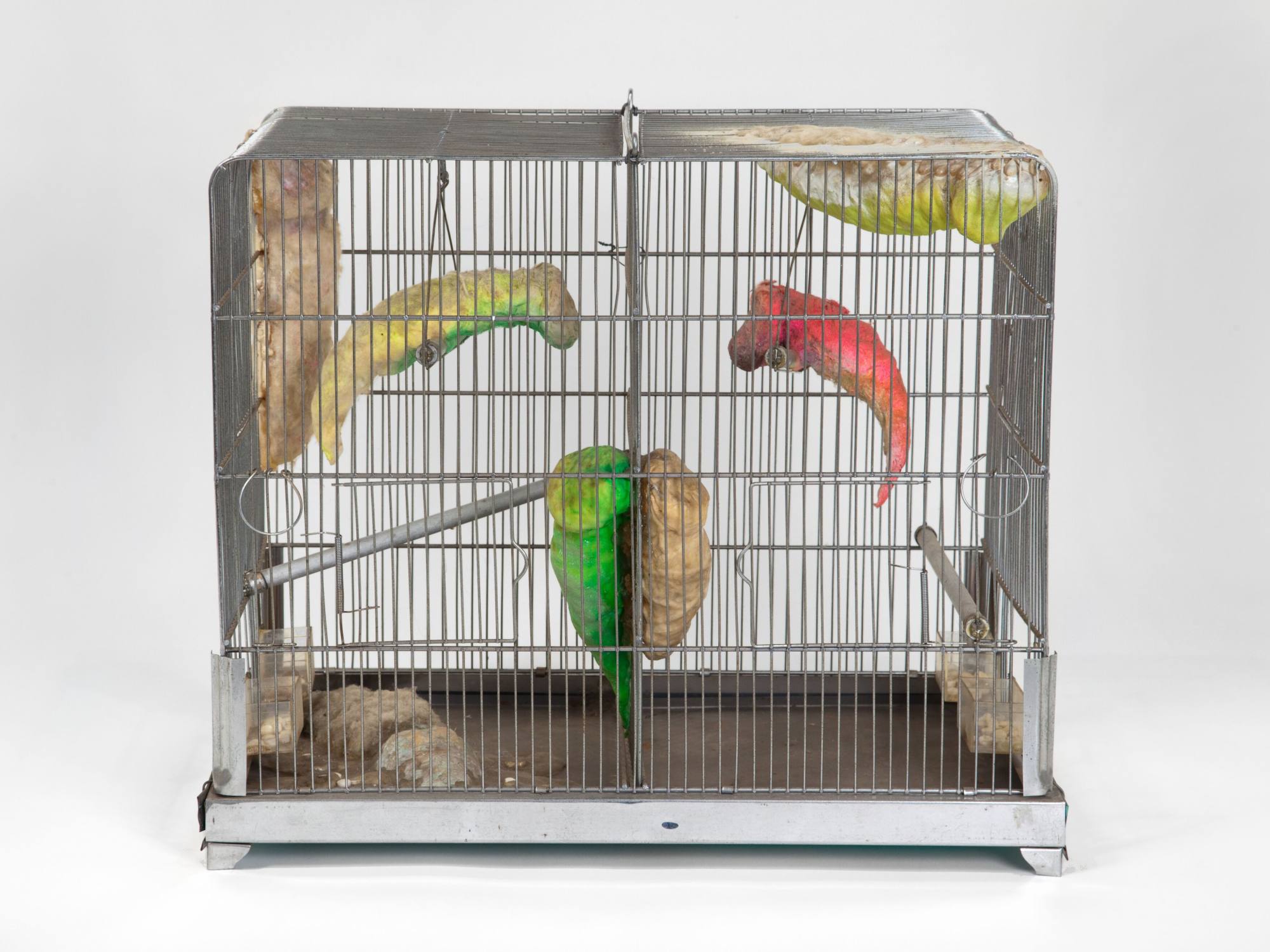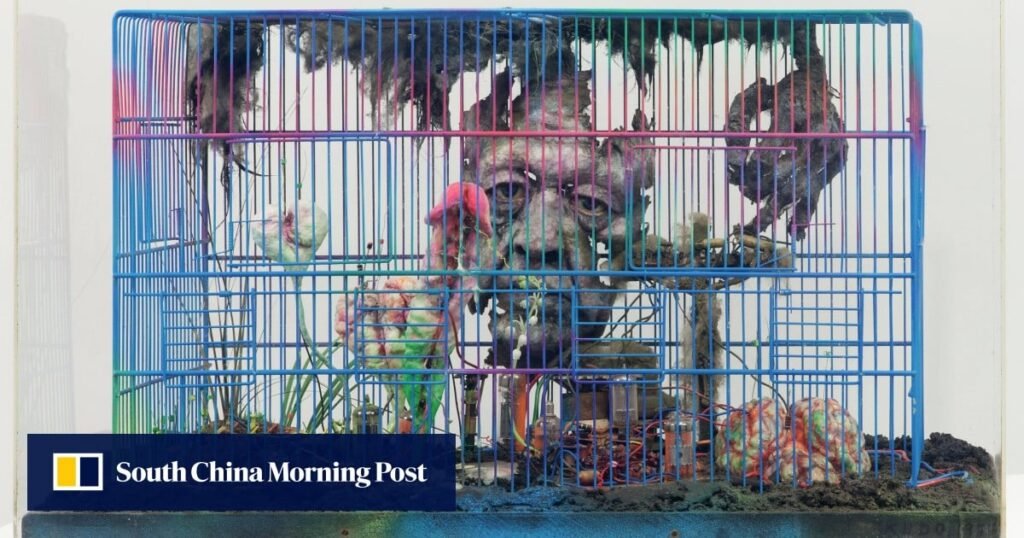Not surprisingly, they stirred a great deal of interest during the solo exhibition’s opening reception on May 31.

The women peered at these trapped creatures with disdain and pity, with one suggesting they reminded her of a lot of men she knew, and another saying they must be Kudo’s critique of toxic masculinity. The men just looked sheepish and slightly pained.
The Japanese artist, who died in 1990 aged 55, would have been pleased.
Doryun Chong, chief curator of Hong Kong’s M+ museum of visual culture, who in 2008 curated Kudo’s first solo museum exhibition in the United States, at the Walker Art Center, in Minneapolis, explained that Kudo made these nightmarish mise-en-scènes with resin, polyester and found objects to elicit responses, to implore audiences to avoid passivity and complacency at all cost. (There are, however, limits on just how much of a reaction is allowed in Hong Kong; the images of the two Kudo artworks in the M+ permanent collection are blanked out on the museum website.)
Chong further pointed to a recurring theme of powerlessness and what the artist called the “Philosophy of Impotence” that were represented by the cages, the disembodied penises and in Kudo’s frequent use of the dice as a motif.
The artist was referring to his own feeling of impotence as well as the despair he felt for humankind.

Born in Japan in 1935 and growing up against a backdrop of death and destruction, and subsequent occupation by the US, his somewhat bleak world view was further shaped by his involvement in a failed protest movement (against US military bases in Japan), his dismay at unfettered industrialisation and consumerism, and his disappointment with Western intellectuals after he and his family moved to Paris in 1962.
The Romanian-French playwright Eugène Ionesco became a symbol of misplaced European and humanist superiority. The shocking, lifelike face of the absurdist dramatist, who Kudo once admired, can be seen at the back of the cage work called, rather pointedly, Votre Portrait (1974).
The face is grey, lethargic and rotting away. A crucifix and electronic parts representing artificial, human progress are taken over by moss, while human organs in acid green and pink appear to be sustained by the soil underneath as grass sprouts around them.

During his all-too-short lifetime, Kudo developed eccentric beliefs (he called his alcoholism a strategy to counter the mainstream). Today, his ideas are startlingly relevant and resonate with current discussions about the climate crisis, gender and racial inequalities, and the widespread feeling of disenfranchisement.
But it is not all doom and gloom.
Another speaker at the exhibition’s opening talk, the collector Joshua Mack, pointed out how much playfulness and play-acting there was in Kudo’s practice – the artist often performed with his works, sometimes pretending to be an Eastern mystic to make fun of Orientalist stereotyping.

There is also the insistence of ceaseless metamorphism in the artworks themselves, a sense of energy flowing, that keeps hope alive.
“There is always a sense of duality, a positive and a negative in his work,” said Mack.
“Tetsumi Kudo: Cages”, Hauser & Wirth, 8 Queen’s Road Central, Tue-Sat, 11am-7pm. Until August 31.






